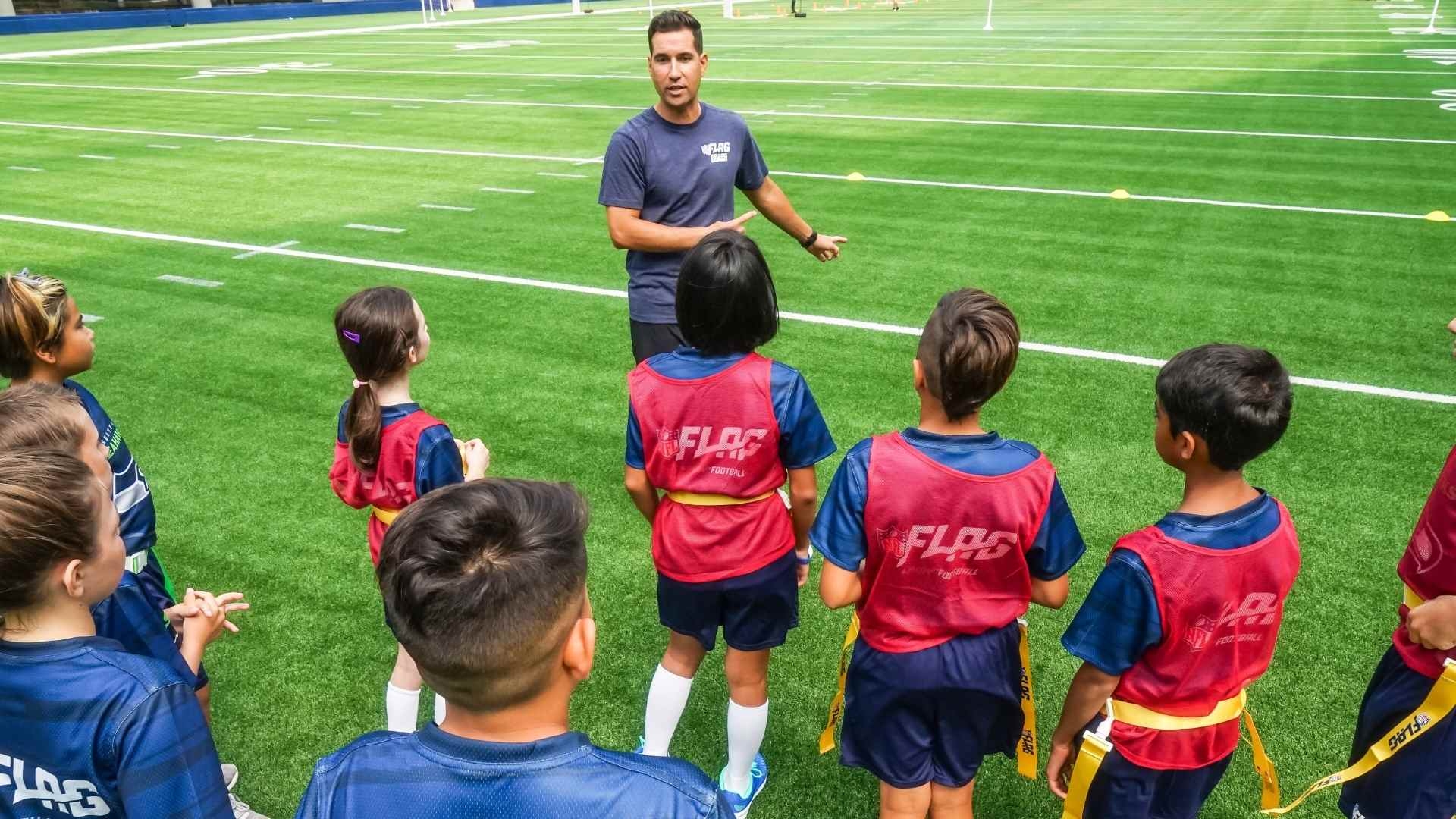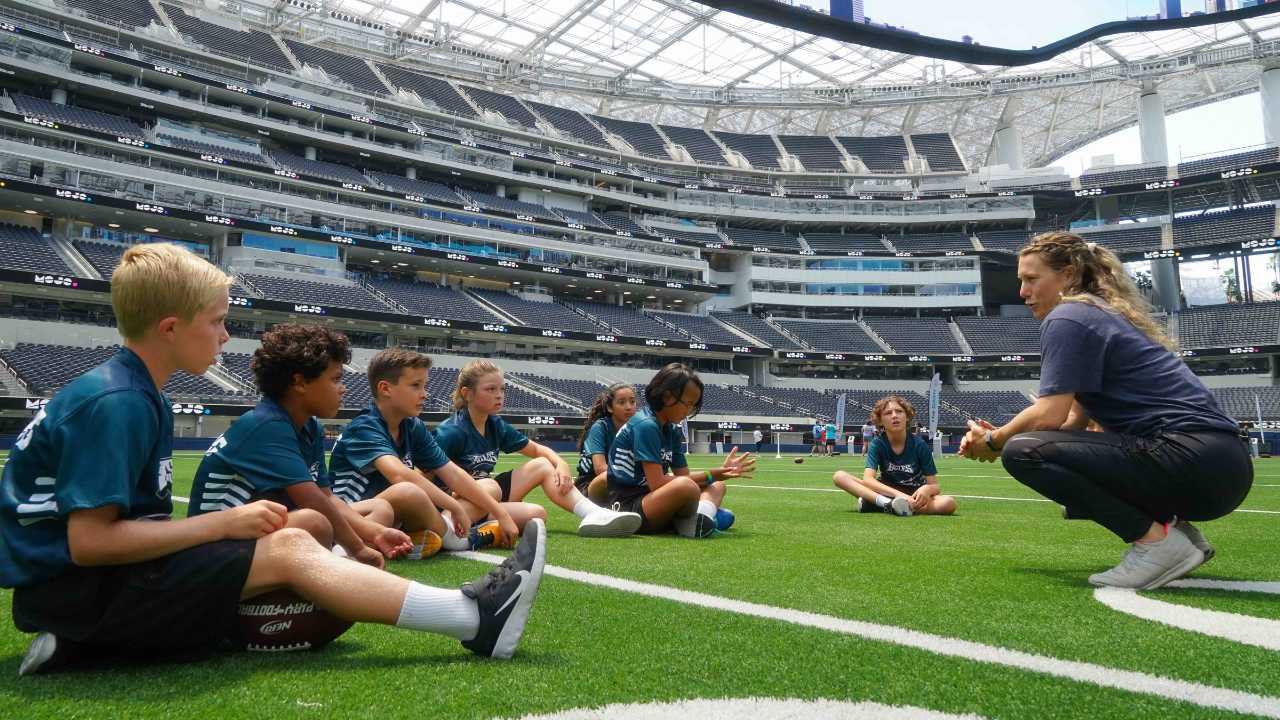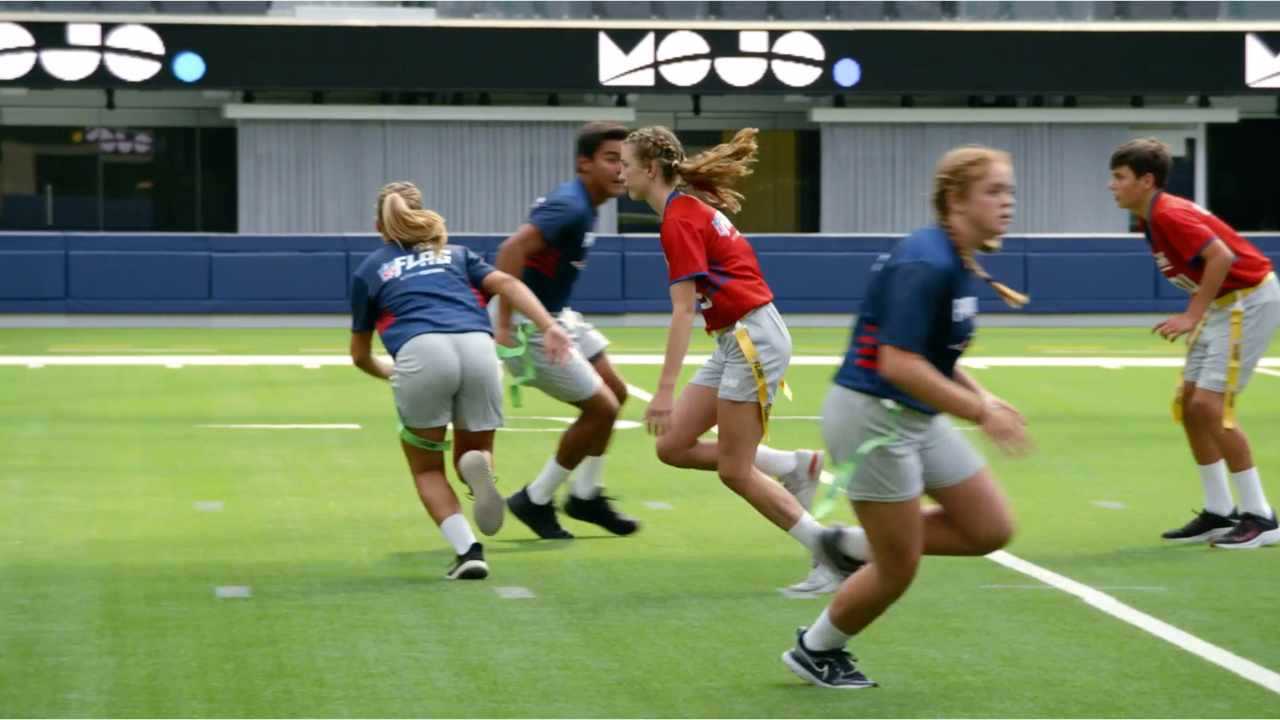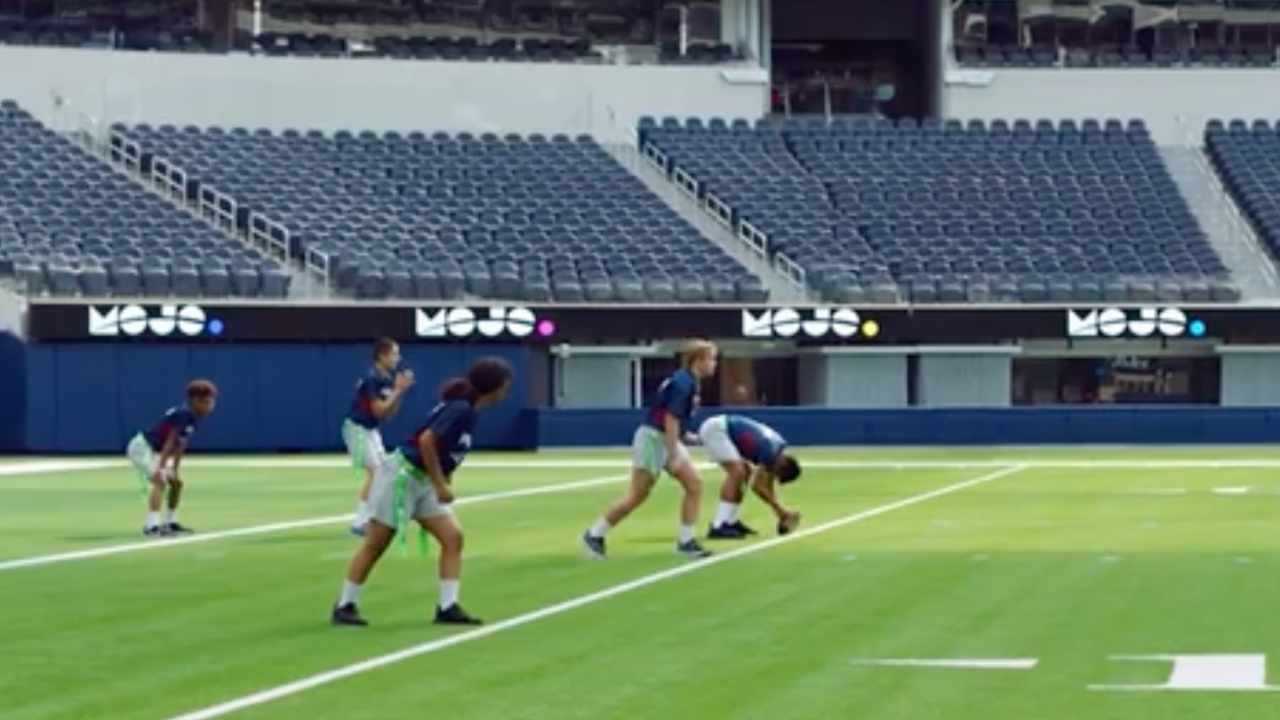Flag Football Positions — Explained
A quick, friendly guide to positions for 5 v 5 flag football.
Sue Pierce
| 3 min read

If you’re new to flag football, don’t fret: There are fewer positions compared to tackle. Art Moreno of Blue Chip Youth Sports, which runs several flag football leagues in Southern California, explains each one and the skills you should look for when shaping your team.
Veteran coaches recommend doing an assessment of the strengths you see in your players at your first practice. But don’t make any decisions right away — kids are full of surprises.
Offense (a.k.a. The Point Scorers)
Quarterback. The quarterback receives the ball from the center and either hands it off or throws it to a receiver. “The quarterback needs to be somebody who’s very aware of what’s going on,” says Moreno. A player with some previous experience would be a good fit. Fun fact: In flag football, the QB cannot run with the ball.
Center. The center snaps the ball to the quarterback to start each play. After the snap, the center becomes a receiver. “The center is actually a very effective weapon,” says Moreno. “I like to use the center because the defense generally leaves them alone.”
Wide receiver. A wide receiver’s job is to catch passes from the quarterback or another player. They run routes down and across the field in an attempt to break free of the defensive players. Having good hands is crucial. Being tall doesn’t hurt.
Running back. A running back takes a handoff from the quarterback and runs for the first down. They need to be agile and have a propensity for spin moves. Fun fact: To “juke” means to fake a move to mislead an opponent.
Defense (a.k.a. The Play Stoppers)
Defensive back. “D-backs” try to stop a running play by ripping off their opponent’s flag. Good defensive backs can anticipate where their opponents are headed. They need quick feet and excellent flag-pulling technique.
Rusher. A rusher starts 7 yards back from the line of scrimmage. After the snap, the quarterback has 7 seconds to get rid of the ball. Then the rusher can go after the QB’s flags to end the play. The player in this position needs to fly. “Especially in the younger age groups, look for a player who has the speed and the athleticism to make a play,” says Moreno.
Safety. A safety stays toward the back of the field to stop any offensive players who get loose or any wide receivers who are heading toward the end zone. Good safeties can read the play and get to where they need to be before they need to be there.
Moreno introduces positions right away, even at the youngest age levels. It’s part of learning the game, and, eventually, finding their roles on the team. Then, says Moreno, “We call them their forever spots.”
Want more in-depth info on each flag football position? Check out the official NFL Flag Football site.





